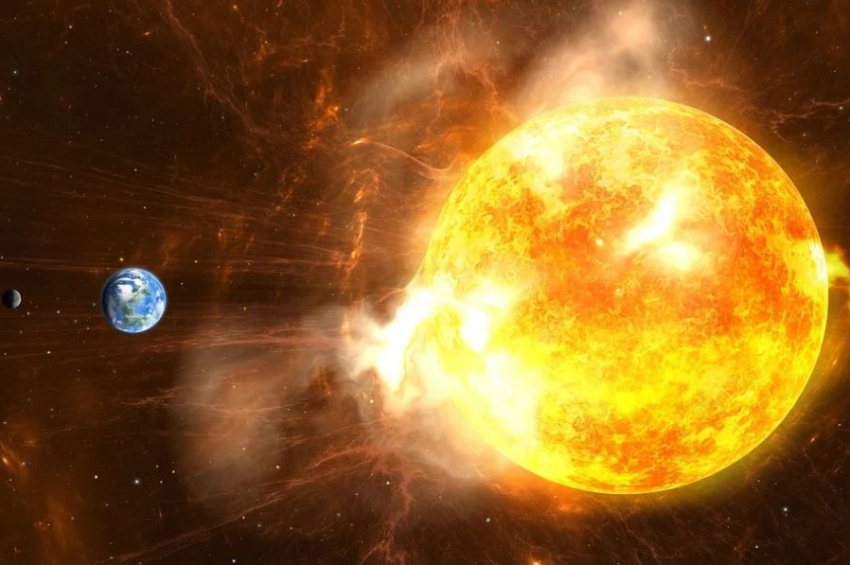Super solar storm hit Earth 14,300 years ago, scientists found
Scientists have uncovered evidence of the most powerful solar storm ever to strike Earth — an event so intense that, if it occurred today, it would wreak havoc on satellites, power grids, and communication systems worldwide, at least.
A new study led by researchers at the University of Oulu in Finland and published in the Earth and Planetary Science Letters reveals that a massive solar storm struck Earth around 12,350 BC, during the last Ice Age.
More to read:
Earth has just experienced the worst solar flare so far
Using advanced climate-chemistry modeling and radiocarbon data from fossilized tree rings, the team concluded that the storm was more than 500 times stronger than the infamous 2003 Halloween Solar Storm — the most powerful solar event in the modern era.
The ancient storm left a clear signature: a dramatic spike in the carbon-14 isotope levels found in tree rings. Carbon-14, or radiocarbon, forms when cosmic rays interact with nitrogen atoms in the atmosphere. Its presence in organic materials allows scientists to trace back significant cosmic events, including solar outbursts.
More to read:
Scientists believe a big interstellar visitor may have rearranged the Solar System
While similar spikes have been linked to solar storms in 775 AD, 994 AD, and earlier Holocene events, this newly identified storm predates them all and is the only known extreme solar particle event to have occurred before the Holocene epoch — our current 12,000-year stretch of relative climatic stability.
Until now, researchers lacked models capable of interpreting radiocarbon data from glacial climates. The new study overcomes that hurdle, dating the storm to between January and April of 12,350 BC. The event likely lit up Ice Age skies with extraordinary auroras, witnessed by prehistoric human communities, including mammoth hunters across Europe.
More to read:
Scientists talk about a hidden ninth planet in our Solar System - again
The storm deposited 18% more charged particles into the atmosphere than the previously strongest known event in 775 AD. By comparison, more recent storms like the 1859 Carrington Event caused widespread disruption to telegraph systems, and the 2003 Halloween Storm led to satellite failures and communication blackouts.
More recently, the 2024 Gannon Storm — a powerful solar event on par with the 2003 storm — forced thousands of satellites to fire thrusters to correct unexpected orbital drifts caused by increased atmospheric density.
More to read:
Earth’s days grow 1.35 seconds every 100,000 years
Had the 12,350 BC event occurred today, experts say it could trigger a global space weather catastrophe, knocking out GPS systems, disrupting aviation, disabling power grids, and even causing satellite collisions. A true disaster for the global economy.
With Earth’s growing reliance on space-based and electronic technologies, researchers stress the urgency of preparing for future extreme solar events.




![[video] Guess who’s hiding more than 8 kilometers below the ocean’s surface?](/news_img/2025/11/13/news0_mediu.jpg)
![[video] Putin rules from shadows: Investigation finds Russian leader rarely works in Moscow](/news_img/2025/11/11/news1_mediu.jpg)

